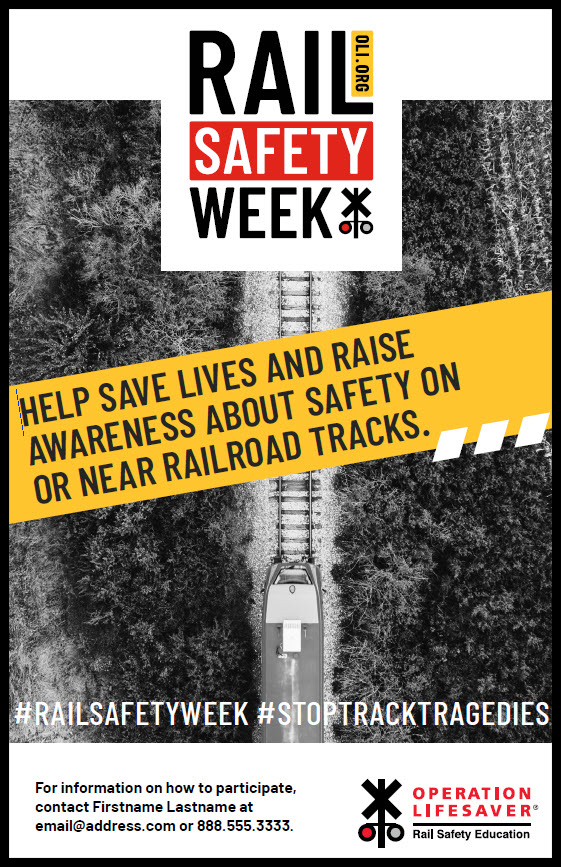
Washington, D.C. — During Rail Safety Week, an annual event led by Operation Lifesaver taking place this year from September 21-27, we work to educate and spread awareness about the importance of taking precautions around trains.
Safety is railroads’ number one commitment and they invest heavily year after year to augment safety across the U.S. rail network. And, thanks to robust investment, railroads have achieved massive safety improvements over the last 20 years. But when it comes to the community and things outside a railroad’s control, progress on rail safety is undercut by an unfortunate statistic: 95% of all rail-related deaths involve people walking on railroad tracks or drivers going through crossings.
Sadly, according to Operation Lifesaver, a person or vehicle is struck by a train every three hours in the United States. When these tragedies occur, lives are changed forever—for the people involved in the crash, their family, friends and community, as well as the train crew members. In 2019, there were 2,216 highway-rail grade crossing collisions resulting in 293 deaths and 807 injuries.
Thanks to Operation Lifesaver, the railroads who work with them, and law enforcement and safety groups dedicated to saving lives, today there are more resources than ever to prevent tragic rail accidents. Here are some tips geared toward the various people and groups that encounter crossings.
- For new drivers. Caution is your number one concern at a crossing—always expect a train, especially as you don’t know a railroad’s schedule and trains are quieter than ever. Avoiding distractions is also key. Put down the phone, headphones or other distractions.
- For all drivers. Waze, the navigation app, has announced a new feature that alerts users of railroad crossings on their route. This safety feature helps drivers avoid railroad crossings at grade entirely, or simply give a heads up to “see track, think train.”
- For commercial drivers. In addition to using increased attention when approaching and crossing railroad tracks, make sure not to stop closer than 15 feet and not to move forward in traffic unless you can safely clear the crossing. If you stall or get stuck on the tracks, get out and call the toll-free number posted at the crossing, or call local police to alert trains of your position.
- For cyclists. When crossing, go slowly, stand on your pedals, and cross the tracks at as close to a 90-degree angle as possible to keep your balance. Be aware, rails can be very slippery when wet. It’s safest to get off your bike and cross the tracks on foot if it’s been raining.
- For pedestrians. The only safe place to cross the tracks is at a designated crossing with either a crossbuck, flashing red lights, or a gate. For your safety, cross tracks only at designated pedestrian or roadway crossings.
- For photographers and railfans. Be a good example and avoid the tracks—people mimic your behavior when they see photos. Also keep in mind that most trains overhang the track by at least three feet and no tracks should ever be assumed abandoned or inactive.
- For reporters and media: The way media tells a story is important, whether it comes to reporting on rail-related suicide incidents or taping segments near the tracks. For example, wearing safety gear, employing situational awareness and implementing proper distancing from tracks and crossings during a story not only prevents incidents but also models good behavior for viewers.
Thanks in part to the dedicated work of rail safety advocates and commitments made by public safety workers and community members, highway-rail crossing collisions have gone down on average since 1981. For Rail Safety Week 2020, we remain committed to the importance of taking collective safety precautions in order to save lives.


